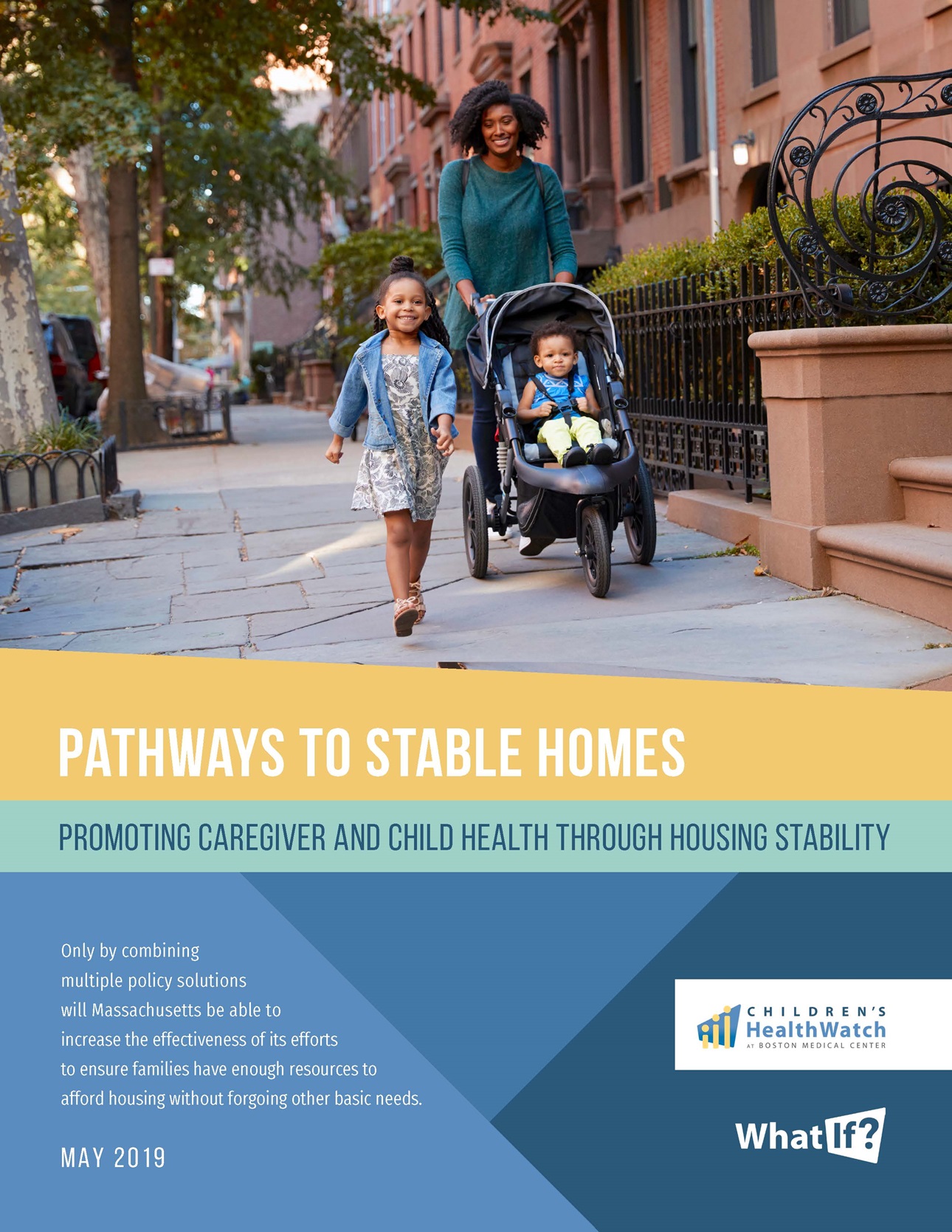New research suggests reducing childcare costs, raising tax credits provide pathway to housing stability
Reducing cost burdens in outside of housing can improve affordability and save Commonwealth families millions in health care costs
May 16, 2019
Boston – A new report from Children's HealthWatch, headquartered at Boston Medical Center (BMC), suggests that combining multiple policy solutions that are complementary to, but outside of current housing policies could provide a key avenue to support families with low incomes, reducing housing instability and improving caregiver and child health.
The report, Pathways to Stable Homes: Promoting Caregiver and Child Health Through Housing Stability, was produced with the support of the Boston Foundation, the Paul and Phyllis Fireman Charitable Foundation, United Way of Massachusetts Bay & Merrimack Valley, and One Family, Inc., and released at a forum at the Boston Foundation today. In the report, researchers highlight the growing number of lower- and middle-income families that are housing cost burdened (paying over 30% of their income on housing), or severely cost burdened (paying over 50% of income on housing). While praising current state’s efforts to build more affordable homes and provide more resources for rental assistance, the researchers suggest setting caps on childcare subsidy co-payments and raising the earned income tax credit could further tip the affordability balance for families.
“Only by creatively combining multiple policies will we be able to ensure that families have the resources to meet their basic needs,” said Dr. Ana Poblacion, Ph.D., Research Associate at Children’s HealthWatch at BMC. “We hear too often that families are choosing between rent and food, or health care. Every dollar saved, whether in housing or these other basic needs, is an extra dollar that can keep Massachusetts families safer, better fed, better cared for and healthier.”
The research team looked at a three-prong approach that includes:
Eliminating the childcare subsidy waitlist and implementing universal childcare, as well as limiting co-payment fees for childcare subsidies to no more than 7 percent of families’ income, to ensure all families who need a childcare subsidy have it and that childcare costs meet the federal recommendation of an affordable childcare subsidy co-payment.
Increasing the Massachusetts Earned Income Tax Credit (EITC) match to 50 percent of the federal credit to further help families afford a stable home and other necessities.
Expanding access to Residential Assistance for Families in Transition (RAFT) Program, including an effective state-funded rental arrearage program for families before they enter the eviction process to protect them from economic, health and other shocks which can threaten their ability to maintain stable homes and avoid homelessness.
Researchers then modeled the impact of these measures on closing the rent and childcare gap for a series of families at various income levels in each county in Massachusetts. They found that limiting childcare co-payments and raising the state EITC would in most cases eliminate the gap. Adding the protection for families facing eviction provides further stability to those families.
Building on previous Children’s HealthWatch studies that connect housing instability and increased health care costs, the researchers were then able to estimate the health care savings resulting from reducing in the health care costs associated with being behind on rent, such as child hospitalizations, maternal and child ambulatory visits, dental procedures, and prescription medication, and maternal care for depression.
Overall, the simulation modeling showed the need for a combination of multiple solutions to ensure families living in the Commonwealth of Massachusetts have enough resources to afford housing without forgoing other basic needs. In Suffolk County for example, a typical family composed of two adults and two young children with annual income of approximately 200 percent of the Federal Poverty Level (FPL) pays more than the national standard of 30 percent of their income on rent. In addition, if receiving a childcare subsidy, they pay almost $8,000 annually in co-payments, which is more than double the maximum guideline of 7 percent of income dedicated to childcare.
Families like the one above are both childcare and rent burdened. Even if capping childcare subsidy co-payments and increase in EITC policies were implemented, families would need additional affordable housing solutions, such as an effective rental arrearage program. In turn, the state would save more than $400,000 in avoidable healthcare costs annually among families of four living with incomes approximately 200 percent of FPL (between $45,000 and $50,000) in Suffolk County alone.
“Providing affordable childcare and housing to families is a moral obligation we make to the Commonwealth’s children, but this data provides both real numbers and concrete policy suggestions that would undoubtedly improve the lives of Massachusetts families in need,” said Nineequa Blanding, Director, Health and Wellness for the Boston Foundation. “We look forward to working with Children’s HealthWatch and others to encourage much needed investments in these areas.”
